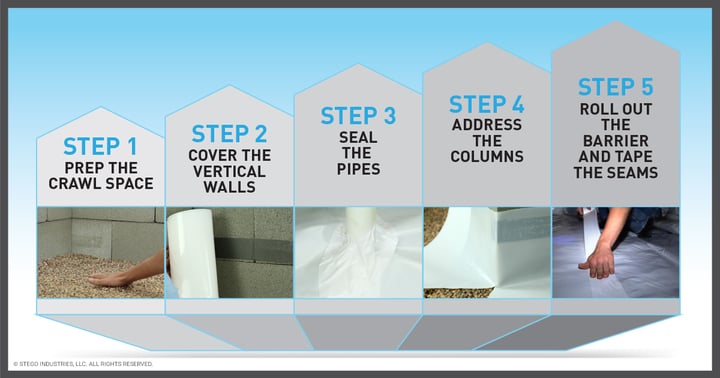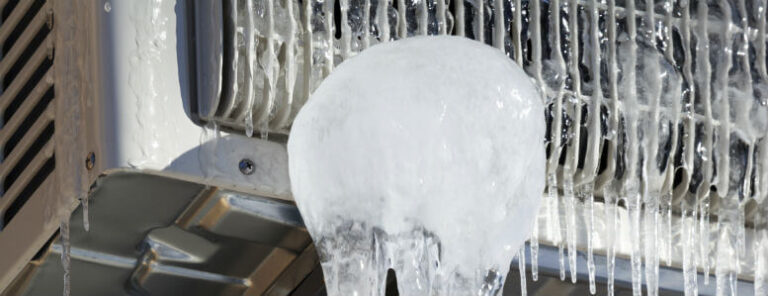How to Run Refrigerant Lines Through Walls: A Step-by-Step Guide
To run refrigerant lines through walls, you can cut a hole in the wall and seal any gaps around the pipes with caulking or fire-rated material. This allows the lines to pass through while maintaining the integrity of the wall.

Credit: www.stegoindustries.com
1. Assessing The Wall And Choosing The Right Location
Running refrigerant lines through walls can be a complex process, but with proper assessment and planning, it can be done efficiently. When assessing the wall, it is important to evaluate its structure and condition. Look for any potential obstacles or hazards that may affect the installation process. Additionally, it is crucial to determine the ideal location for running the lines. Factors such as proximity to the outdoor unit, accessibility, and aesthetic considerations should be taken into account.
2. Tools And Materials Needed For The Installation
|
When it comes to running refrigerant lines through walls, there are a few essential tools and materials that you will need for a successful installation. The essential tools required include a pipe cutter, flare tool, refrigeration wrench, tubing bender, and a vacuum pump. These tools are necessary for cutting and shaping the refrigerant lines and ensuring a proper seal. In addition to the tools, you will also need several materials such as copper tubing, refrigerant line insulation, brackets for mounting the lines, and a line set cover. These materials are crucial for protecting the refrigerant lines and ensuring their efficient operation. Lastly, it is important to prioritize safety during the installation process. Make sure to wear safety equipment such as gloves and safety glasses. Additionally, follow all recommended safety precautions, such as turning off the power before starting the installation and properly ventilating the area. |
3. Step-by-step Guide To Running Refrigerant Lines Through Walls
HTML Format: “`htmlStep 1: Planning the pathway for the lines
Before starting the installation process, it’s crucial to plan the pathway for the refrigerant lines. Consider factors such as the shortest distance between the indoor and outdoor units, avoiding any obstructions, and ensuring the lines are properly insulated to prevent energy loss.
Step 2: Creating an access hole and preparing the wall
Once the pathway is planned, create an access hole in the wall where the lines will pass through. This hole should be large enough for the lines to fit comfortably. Prepare the wall by removing any insulation or obstacles that may hinder the installation process.
Step 3: Installing the refrigerant lines and fittings
Now it’s time to install the refrigerant lines and fittings. Carefully feed the lines through the access hole and connect them to the indoor and outdoor units. Use fittings and connectors to secure the lines in place and ensure a tight seal.
Step 4: Sealing and insulating the lines for optimal performance
To maximize the performance of your refrigerant lines, seal any gaps or openings around them. This will prevent air leaks, improve efficiency, and reduce energy consumption. Additionally, insulate the lines to prevent condensation and maintain the desired temperature.
Step 5: Testing the installation and checking for leaks
Once the installation is complete, it’s essential to test the system and check for any leaks. Use a refrigerant leak detection kit to inspect the connections and ensure everything is properly sealed. Address any issues before proceeding to the next step.
Step 6: Finishing touches and restoration of the wall
Lastly, complete the installation by making the necessary finishing touches. This may include patching up the access hole, painting the wall, or restoring any disturbed elements. Leave the area clean and tidy, ready for the efficient operation of your refrigerant lines.
“`Frequently Asked Questions On How To Run Refrigerant Lines Through Walls
Can You Run A Line Set Through A Wall?
Yes, you can run a line set through a wall. However, it may be more difficult than a normal DIY installation, especially if the line set needs to go straight down through an interior wall. Make sure to properly seal any gaps around the pipes with caulking or fire-rated materials.
Can I Run Mini-split Lines Inside Wall?
Yes, you can run mini-split lines inside the wall. However, this is more involved and difficult compared to mounting it on the exterior wall. It is important to determine the suitable location and cut a hole in the wall for the pipes to fit through.
Seal any gaps around them with caulking or fire-rated material.
How Far Can You Run Refrigerant Lines?
Refrigerant lines can be run through walls, but it can be more challenging than a typical DIY installation. If you’re planning to run the lines down an interior wall, it may require extra effort. The length of the refrigerant lines can vary depending on the specific system, but there are guidelines for the maximum length of A/C lines.
It’s best to consult with a professional to ensure proper installation.
What Is The Rule Of Thumb For Ductless Mini Splits?
To install a ductless mini split, you can run refrigerant lines through walls. Cut a hole in the wall for the pipes and seal any gaps with caulking or fire-rated material. It’s possible to run the lines inside an interior wall, but it can be more challenging than exterior installations.
Remember to follow proper guidelines when running the lines.
Conclusion
Installing refrigerant lines through walls can be a challenging task for homeowners. However, with the right knowledge and techniques, it can be done effectively. By following the steps outlined in this blog post, you can ensure a successful installation without damaging your walls or compromising the integrity of your HVAC system.
Remember to properly measure and plan the route, use appropriate tools and materials, seal any gaps or penetrations, and consult a professional if needed. With these guidelines in mind, you can confidently run refrigerant lines through walls and enjoy efficient cooling in your home.






